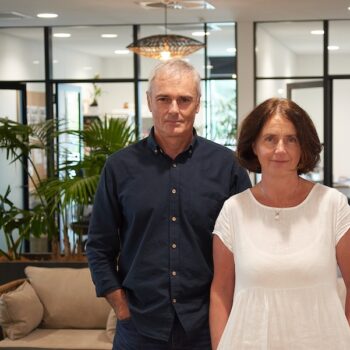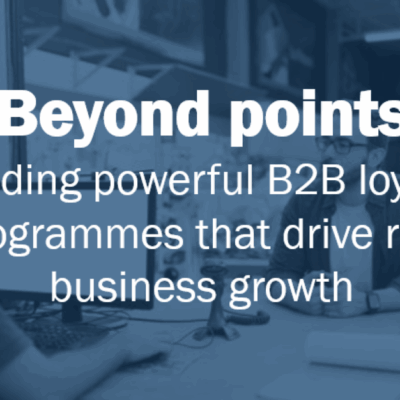Funding your next development project
With traditional banks more risk-averse, lenders like ASAP Finance are reshaping how property developers fund and deliver successful projects.
The property development market has undoubtedly become more complex in recent years. Higher interest rates, shifting buyer behaviour, and a sharp slowdown in new-build sales have made it tougher to get projects off the ground and across the line. CoreLogic estimates sales of new builds are down about 45 percent from the 2021 peak – a bigger drop than the overall housing market – and that’s seen developers thinking outside the box to keep stock moving, from mortgage holidays to cashback offers.
But within these headwinds lie opportunities. With more existing homes on the market, developers must differentiate their projects by focusing on quality, design and location – and for buyers, new builds remain attractive thanks to regulatory exemptions and modern, efficient layouts. Add to this the fact that interest rates are beginning to ease, and the sector is already seeing early signs of renewed activity.
For developers, the real challenge, and opportunity, is in securing the right funding partner to help them move quickly and confidently in this evolving market. Traditional banks have become more risk-averse, leaving many projects stalled. That’s where specialist non-bank lenders such as ASAP Finance are stepping in, offering the speed, flexibility and hands-on expertise to keep developments moving.
Ben Friedlander, Senior Lending Manager at ASAP Finance, says that understanding current market shifts is key to unlocking finance and making those funds work for you.
“Four years ago, the first question was simply whether funding was available. Today, developers want certainty, a long-term vision for how the finance will support the project, and a strategy that keeps them competitive in a tougher market.” says Ben.
This transformation reflects a broader evolution in the property sector, where the old rules of engagement have been rewritten. Where once developers could maximise density and rely on a quick sale, today’s market demands a sharper, more strategic approach.
“It used to be about how many units you could fit on one site. Developers were more interested in the biggest profit. But that approach doesn’t work today. You might have a project that shows a 20 percent margin on paper, but if you can’t sell the product, you will never realise the profits.”
Ben says that the shift is more than a market correction, it is a mindset revolution. Developers must now consider consumer preferences, location nuances, and market saturation.
“The market tells the story. Two-bedroom units were overbuilt, creating excess supply that the market couldn’t absorb. Developers shifted to three-bedroom homes, but even that segment is now competitive.
“It’s about being first to market or first to spot a gap,” Ben says. “If you don’t move fast, you’ll get left behind.”
This is where he says ASAP Finance has found its edge. In contrast to traditional banks with rigid approval processes, ASAP Finance offers speed and flexibility.
“We don’t have the red tape that banks have. We are privately funded, so with that comes the ability to create our own rules. No pre-sales, no quantity surveyor reports, no bank valuations. It’s about speeding up key parts of the development lifecycle.”
While a bank-funded developer might manage one project per year, non-bank property finance can enable multiple projects in the same period.
“Yes, the cost of funds is higher, but the return on time and capital is often far greater,” he explains.
ASAP Finance’s unique value proposition comes from its hands-on model. Every lending manager has real world development experience .
“We understand the journey because we’re walking the same path.”
Ben says that ASAP Finance clients typically fall into two camps: Those who can’t meet traditional bank conditions and require an out of the box funding solution, or those who can met bank funding criteria, but choose ASAP Finance anyway, opting for its speed and simplicity.
Clients also benefit from ASAP’s extensive industry network. “We’ve helped connect first-time developers with reliable builders, surveyors, and project managers. Sometimes, the right referral can completely change the shape and cost of a project.”
This, he says can translate into real savings. “I recall a recent Auckland project where a developer was quoted circa $5 million in construction costs.
“We reviewed the numbers and quickly identified that the project was mispriced. We were able to quickly connect them with one of our builders who brought the build cost down to just above $4 million. For us, it’s about identifying risks early and connecting clients with the right people at the right time.”
ASAP Finance managers stay involved from start to finish, handling business development, analysis, documentation, and construction oversight. Unlike many lenders, they provide continuity across the full project lifecycle.

Even for first-time developers, Ben says a strong application can open doors if it’s backed by clear thinking and a capable team.
“You might be able to outsource project management but you can’t outsource knowing your product.”
ASAP Finance evaluates applications using a flexible version of the traditional Five C’s of Credit: Character, capacity, capital, collateral, and conditions.
“We don’t need QS reports or pre-sales. If the deal makes sense, we’ll fund it.”
They also offer capitalised interest and milestone-based drawdowns, practical tools that help developers manage cash flow during construction.
“Developers usually have all their capital tied up in the project,” he says.
“Our job is to keep things moving. That means getting builders paid on time and avoiding unnecessary delays.”
Despite industry-wide challenges, ASAP Finance has maintained a steady flow of projects.
“We acknowledge there’s been a slowdown, but in our space, the pipeline has remained strong. We haven’t seen the same pullback others have.”
That resilience he says comes from a client base that’s adapted to the new market. “There are two types of developers now – those who’ve figured out how to operate in this environment, and those who are overleveraged and working through problem projects from 2021/2022. Almost all our clients fall into the first group.”
ASAP Finance funds projects nationally, with facilities ranging from $500,000 to $50 million, including options for everything from land bank loans to traditional property development loan. The company’s focus is on the main urban centres, including Auckland, Hamilton, Wellington,
Christchurch and Queenstown, where demand and activity are strong.

Since its inception in 2004, ASAP Finance has approved more than 2,800 loans, providing over $4.4 billion in facility limits and funding developments worth more than $6.3 billion. These have supported the delivery of 7,400 homes and 1,760 residential sections across the country.
“There’s a promising window to launch a project”, Ben says. “Land remains hard to find but competition has eased, funding is widely available with lenders competing for deals, materials and labor are more accessible, and construction costs have pulled back noticeably.”
With interest rates beginning to ease and affordability improving, the outlook is more optimistic than headlines might suggest.
“You don’t need massive capital gains to generate profits. In a consistent market with flat pricing, developers can still achieve 20 percent returns. All you really need is for sales to keep ticking over. It’s stagnant markets where nothing moves that cause real problems.”
Many of ASAP Finance’s long-term clients are proving this in real time. “We’ve had clients go from doing four houses per year, to 12, to 20, and some going on to deliver as many as 100 houses per year. And as they’ve scaled their business, we’ve scaled with them.”
5 tips on how to get your project funded faster:
Ben shares advice for new and existing developers wanting to unlock finance for a project quick smart:
1. Master your numbers
Prepare realistic budgets, valuations and timelines supported by solid data. Know your costs inside out, from utility connections to material expenses, and ensure your sales projections align with current market conditions.2. Build the right team
As with any business, success depends on working with the right people. At ASAP, we often connect developers with trusted partners to ensure that the right expertise is in place from day one.3. Communicate proactively
Maintain open and honest dialogue with your lender, especially when challenges arise. Prompt communication enables faster solutions and keeps the project moving forward.4. Present compelling evidence
Back your proposals with robust evidence and a strong sales or leasing narrative. Show lenders not just what you are building, but why buyers will want it.5. Choose the right partner
Work with funding partners who understand development and can tailor structures to suit. Non-bank lenders often offer the flexibility and speed traditional banks simply cannot match.
ASAP Finance is a specialist non-bank lender providing residential, commercial and development finance across New Zealand. They work with developers, investors and homebuilders who need fast, flexible funding when traditional banks can’t deliver.





